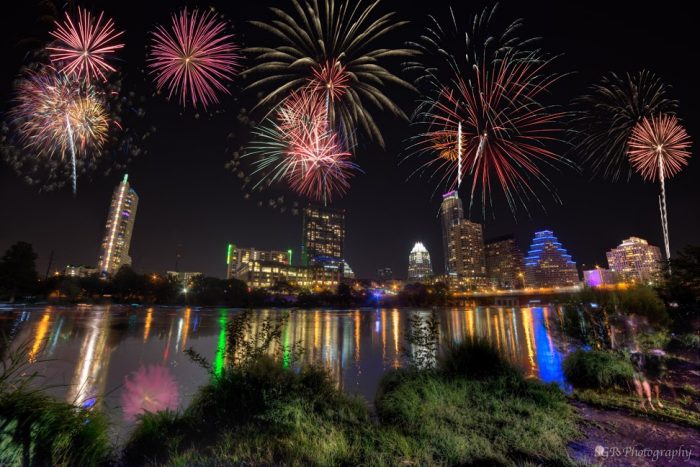How Do Manufacturers Of Fireworks Produce The Variety Of Colors That Are Seen On The 4th Of July

On Midweek, July one, 2020, Canadians celebrated Canada Mean solar day, and Sabbatum, July four, is Independence Day – commonly referred to every bit the Fourth of July – in the United States. That ways it'southward fireworks flavour in North America, though many – if non virtually – displays have been canceled in 2020 due to the pandemic.
And so you might or might not see fireworks (a type of pyrotechnics) this year. Nevertheless, it'due south fun to call up the reds, oranges, yellows, greens, blues and purples exploding in the skies, creating "ohhhhs" and "ahhhhs."
And it's interesting to know what creates those brilliant colors.
The colors in fireworks come from a simple source: pure chemistry. They're created past the utilise of metal salts. These salts are dissimilar from salt, and in chemical science 'table salt' refers to any compound that contains metal and non-metal atoms. Some of these compounds produce intense colors when they are burned, which makes them ideal for fireworks. Others, similar potassium nitrate, sulfur and charcoal are often used to help the fireworks burn down. Nitrates, chlorates and perchlorates provide oxygen for the combustion of the fuel. Dextrin, often used every bit a starch, holds the mixture together. Some colors can be strengthened with the employ of chlorine donors.
Read: It's July 4, 2020, but the fireworks shows won't continue

Metallic salts commonly used in firework displays include: strontium carbonate (red fireworks), calcium chloride (orange fireworks), sodium nitrate (yellow fireworks), barium chloride (light-green fireworks) and copper chloride (blue fireworks). Purple fireworks are typically produced by use of a mixture of strontium (red) and copper (blue) compounds.
The metal salts are packed into small pea- to plum-sized pellets called "stars" or "pyrotechnic stars."
After a firework is ignited, a lift charge propels it into the heaven. That's just explosive blackness powder in a bars infinite that, when lit, causes a fast increment of estrus and gas that can transport a firework as loftier as 1,000 anxiety (300 meters) into the air.
Meanwhile, a fourth dimension-delay fuse burns slowly into the interior of the firework beat. After about 5 seconds, as the shell is soaring overhead, the fuse kindles a charge that reaches the core of the firework, explodes and ignites the stars that incorporate the metallic salts.

Voila! A beautiful and colorful fireworks display.
Past the way, the people who create fireworks are precise, expert craftsmen. Putting on a fireworks brandish is a circuitous process, and must be washed safely in a controlled environment. If even one matter is off — too much blackness pulverization, stars that aren't aligned correctly or a trigger that fires too before long or too late — everything tin go kaboom. Fireworks are explosives, after all, and working with them is all-time left to the professionals.
Bottom line: The blood-red, orangish, xanthous, dark-green, blue and royal colors exploding in the night sky during a fireworks festival are created by the use of metallic salts. In 2020, many if non most fireworks displays have been canceled due to the pandemic.
Read more: The Chemistry of Fireworks Colors
Read more than: The Chemistry of Fireworks
Enjoying EarthSky? Sign up for our free daily newsletter today!
Source: https://earthsky.org/human-world/how-do-fireworks-get-their-vibrant-colors/#:~:text=They're%20created%20by%20the,makes%20them%20ideal%20for%20fireworks.
Posted by: smallwoodfroopped.blogspot.com

0 Response to "How Do Manufacturers Of Fireworks Produce The Variety Of Colors That Are Seen On The 4th Of July"
Post a Comment